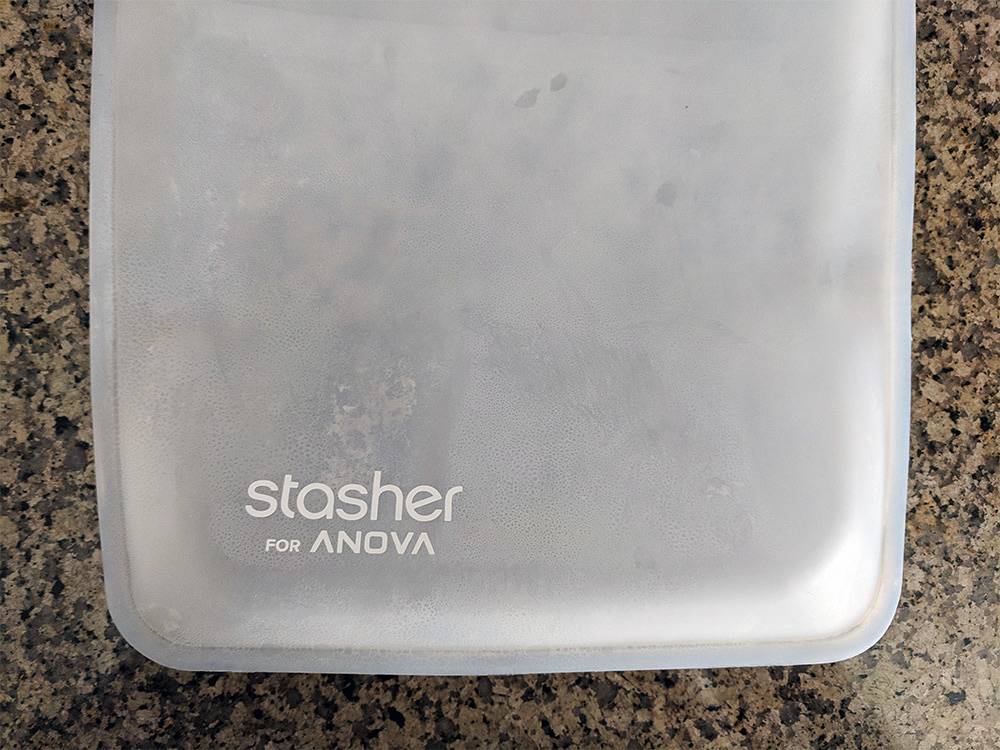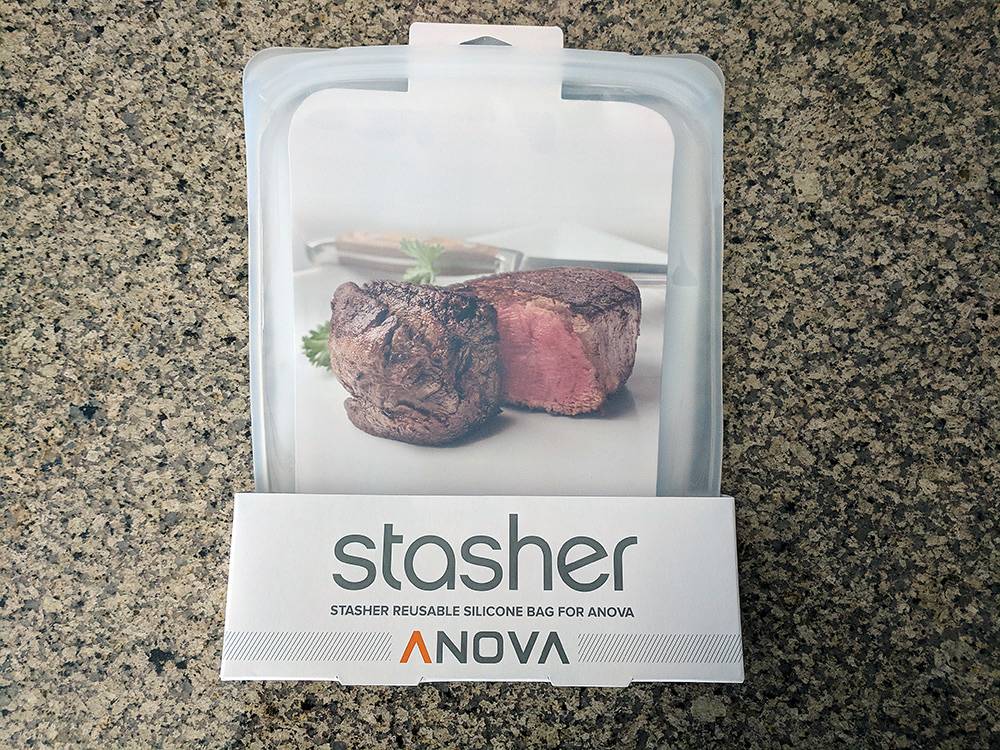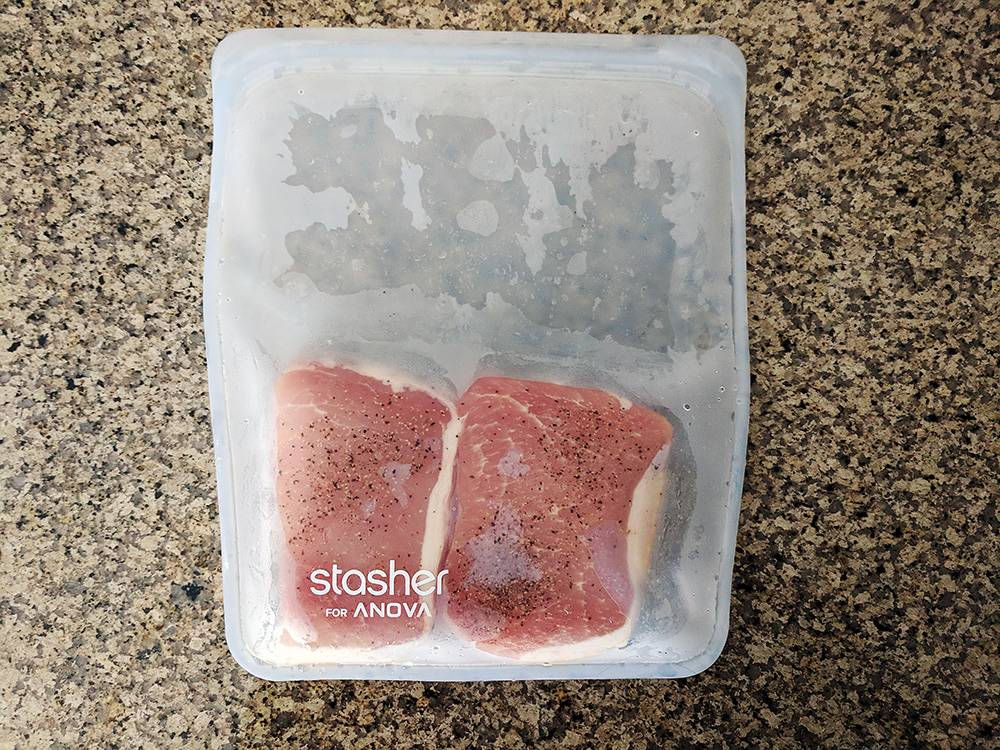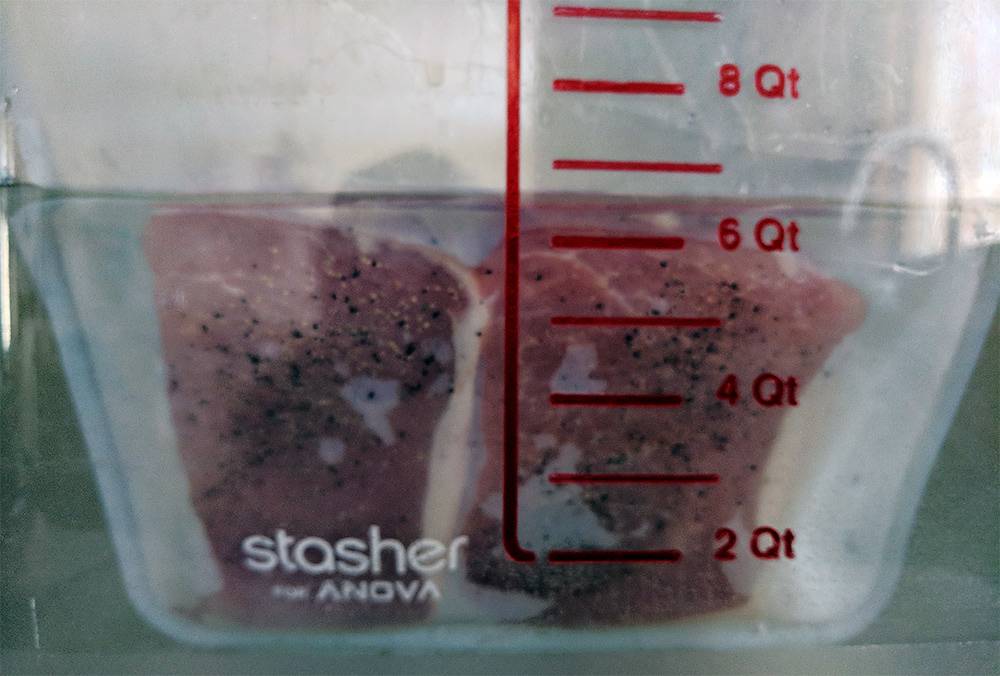Anova Stasher Bag Review: Reusable Silicone Bags for Sous Vide
Stasher Design
Stasher bags comes in two sizes: Large (10.25 x 8.25 in) and Small (7.0 x 7.6 in). The small is about the size of a sandwich bag; I personally recommend everyone buy the large. The bag is quite heavy duty, since it’s made from “100% pure platinum food grade silicone” (whatever pure platinum silicone is), which is also of course a great option for BPA-free sous vide bags.
Stasher Bag Performance
I cooked two boneless pork chops for my first test, using the large-sized bag (which fit the two chops quite nicely). After placing the pork inside the bag, I folded the top portion in half and slowly squeezed as much air out as possible before sealing the bag. I dropped the bag into a pre-heated water bath and, to my surprise, the bag didn’t float. Even though there was still quite a bit of air in the bag, the silicone was heavy enough so that the food not only stayed below water, but the top of the bag essentially stayed upright by itself.
Cleaning the Stasher Bag
The company markets the bag as being dishwasher safe – my tests disprove this. Now, it could very well be my dishwasher; the instructions state to only use it on the top shelf by opening the base of the bag and placing it over a few rows of your dishwasher. This didn’t work to well in mine as there wasn’t enough head room. This would likely work fine for the small bag, but definitely not the large. I ran a clean cycle a few times anyways, but it really didn’t clean the pork juices enough for my liking. Again, this could be my dishwasher, but if you’re cooking any meats in the bag, I highly recommend you hand wash it.





No conclusion? Did you liked it? Any cons?
No conclusion? Did you liked it? Any cons?
*Wired* did a thorough review of the Stasher bags (try a Google search for “wired review stasher bag”, no quotes). Their reviewer talked to a “green chemistry professor” at U. Oregon, David Tyler, about them. Between (1) the bags containing a lot more material than plastic sous vide bags (and esp. much more than a zip-loc type), and (2) silicone taking much longer than plastic to decompose after disposal, for there to be an environmental benefit from using these bags, Tyler said, “If you do go that route, just make sure you commit and use the bejeezus out of it.”